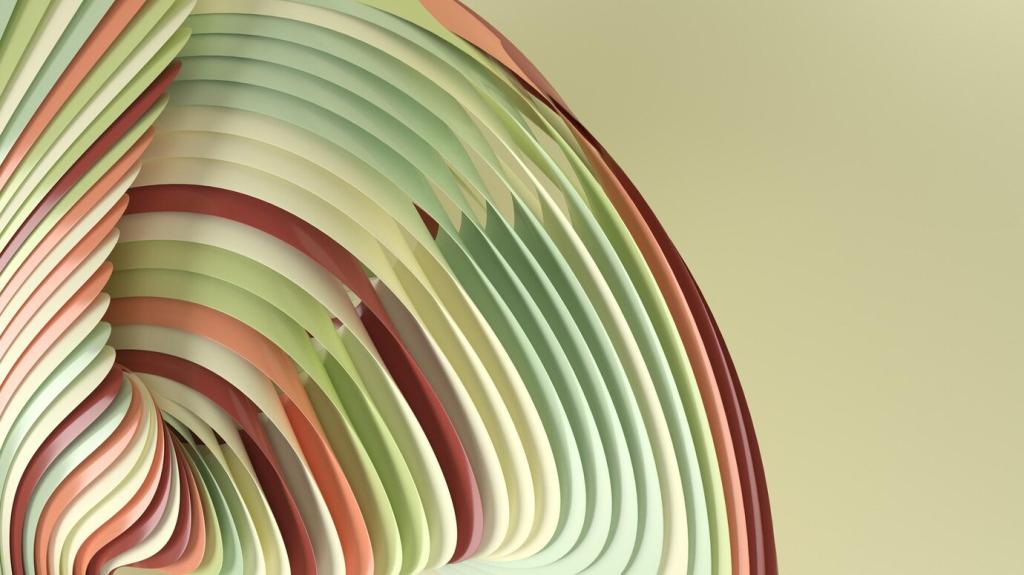
Recycling and Upcycling in Interior Design: Turning Cast-Offs into Character
Chosen theme: Recycling and Upcycling in Interior Design. Welcome to a home page built on creativity, conscience, and charm—where discarded materials become soulful centerpieces and every corner tells a story. Join us, subscribe for fresh ideas, and share your experiments so our community can learn from your brilliant second-life transformations.
Why Recycling and Upcycling Belong in Your Home
Recycling vs. Upcycling: The Practical Difference
Recycling breaks materials down to make something new, while upcycling elevates existing items without destroying them. In interior design, upcycling often preserves patina, craftsmanship, and history, giving your rooms depth. Tell us your favorite find in the comments and subscribe for weekly projects that celebrate this difference.
The Measurable Impact: Waste Diverted, Carbon Saved
Every chair rescued, tile reclaimed, or lamp rewired keeps waste out of landfills and reduces demand for new manufacturing. That means lower embodied carbon in your home. Track your wins: note pieces saved and estimate their weight. Share your totals with us and inspire another reader to start today.
A Story from a Small Apartment with a Big Heart
When Maya found a battered trunk outside her building, she sanded the lid, lined the inside with leftover wallpaper, and added casters. The trunk became her coffee table, storage, and conversation starter. If her story moved you, hit subscribe and send your before-and-after photos—we might feature your makeover next.
Materials and Finishes with a Second Life
Wood and Veneer: From Weathered Boards to Warm Surfaces
Salvaged wood carries grain and history that new lumber rarely matches. Stabilize splits with bow ties or epoxy, keep character knots, and finish with plant-based oils for a satin glow. Got a rescued plank story? Share it, and subscribe for our upcoming guide to zero-VOC finishes for family-friendly interiors.
Metals and Hardware: Clean, Seal, Celebrate the Patina
Old brass pulls, steel frames, and cast-iron bases often need only rust removal and a breathable seal. Try citric-acid baths, gentle brushing, and clear wax for protection. Ask questions about metal safety in comments, and join our newsletter for a printable checklist covering every step from sourcing to sealing.
Textiles and Foam: Make Soft Things Sustainable
Reupholster with vintage fabrics or deadstock remnants, and replace foam with natural latex or wool batting when possible. Steam clean thoroughly and pre-wash to avoid shrinkage. Want patterns that mix without clashing? Subscribe and download our palette workbook designed specifically for upcycled sofas, cushions, and headboards.



Room-by-Room Upcycling Strategies
Turn an old door into a low media console with hairpin legs, or stack vintage suitcases for a side table with hidden storage. Frame fabric offcuts as art. What would you try first? Comment with a photo of your living room’s toughest corner, and we’ll send tailored tips to subscribers.
Room-by-Room Upcycling Strategies
Reclaimed butcher block becomes a resilient island top; mismatched chairs unite under one color and sealed matte finish. Use rescued glass jars as pendant shades. Share your thrifted chair lineup with us, and subscribe to receive our stain-resistant paint recipes and food-safe sealing methods for high-traffic surfaces.
Prep Like a Pro: Cleaning, Sanding, and Testing
Start with thorough cleaning using mild soap, test for lead paint on pre-1978 items, and use appropriate respirators when sanding. Gentle progress beats aggressive mistakes. Share your toughest prep challenge, and subscribe to get our tool list for tiny apartments and balconies with minimal dust.
Joinery and Structure: Make It Solid, Make It Last
Check wobble points, reinforce joints with dowels or pocket screws, and replace brittle glue with modern wood adhesives. Structural integrity comes first, style second. Post your repair questions in the comments, and join our newsletter for diagrams that demystify common fixes on chairs, tables, and cabinets.
Lighting and Electricity: Safety Above All
Converting found objects into lamps is magic, but respect electrical codes: use certified lamp kits, strain reliefs, and heat-safe sockets. When unsure, hire a pro. Curious about bulb warmth for upcycled shades? Subscribe to our guide on color temperature and energy use that makes recycled lighting truly glow.
Sourcing Smart: Where and How to Find Great Pieces
Thrift Shops, Salvage Yards, and Curbside Gold
Go early on restock days, measure before you leave home, and bring blankets and straps. Prioritize solid frames over perfect finishes. Share your city’s best salvage spots, and subscribe to our monthly map of community sales, waste days, and reuse warehouses near you.
Online Marketplaces: Filters, Messages, and Etiquette
Set alerts for keywords like “solid wood,” “mid-century,” or “industrial.” Ask for underside photos and measurements, and pick up promptly. Rate sellers and buyers kindly. Drop your favorite search terms below, and join our list for saved filter bundles curated for upcycling in small urban spaces.
Community Swaps, Freecycles, and Repair Cafés
Local exchanges turn neighbors into collaborators. Host a swap night, share tools, and learn fixes from volunteers. The story you bring home often matters as much as the object. Tell us about your community group, and subscribe to receive our starter kit for organizing a neighborhood upcycle meetup.

Color Palettes that Unite Mismatched Finds
Choose one dominant neutral, one accent, and one metallic. Repeat them across frames, textiles, and hardware. Cohesion lets patina shine without visual noise. Share your palette in the comments, and subscribe for printable swatch cards designed specifically for homes built on upcycled character.

Balancing Eras and Textures with Confidence
Pair rustic wood with sleek lacquer, or industrial metal with plush velvet to create tension and comfort. Limit statement pieces to one per zone. Show us your boldest mix, and sign up for our mini-course on styling narratives that honor the past while feeling unmistakably present.

Tell the Story: Label, Document, Celebrate
Tuck a small card inside drawers noting the piece’s origin and your process. Photograph stages, write what you learned, and share with our community. Subscribe to receive a free template for documenting upcycles, turning your home into a living archive of mindful, creative decisions.
